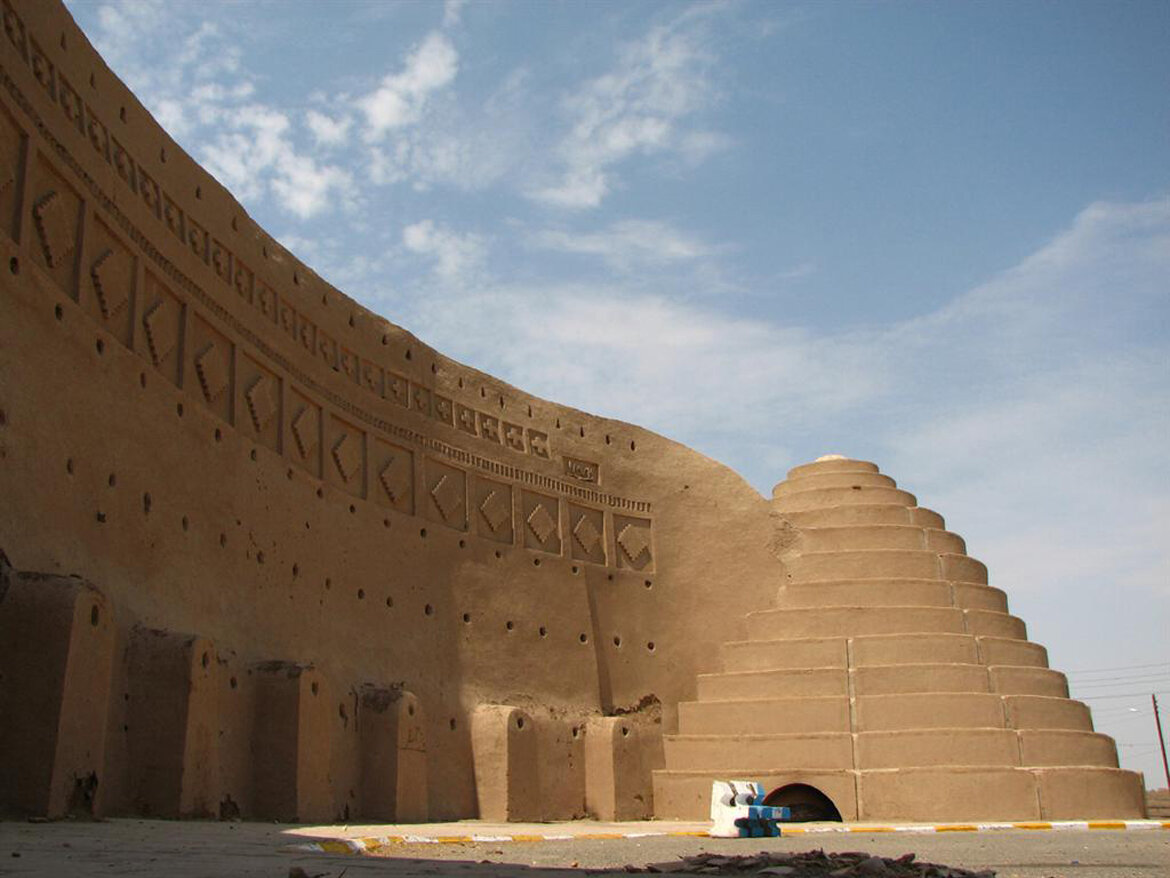Yakhchal, where ancient Iranians stored ice before freezers, under restoration

TEHRAN—Restoration work has commenced on Yakhchal-e Moayedi, one of the domed mud-brick structures where ancient Iranians stored ice before the age of freezers and refrigerators.
Currently, the restoration of cob walls and brickwork on the exterior is 70 percent complete, Kerman province’s tourism chief said on Sunday.
There have been arrays of such Yakhchals in Kerman, among which Moayedi ice house is probably the most famous one. Other ones were destroyed over time.
Registered as a national heritage in 1999, the 20-meter-tall Yakhchal-e Moayedi is one of the tourist attractions of Kerman, which has been a cultural melting pot since antiquity, blending Persians with subcontinental tribe dwellers.
The word Yakhchal stands for “ice pit.” These oddly shaped structures provided both space and conditions to store not just ice, but many types of food that would otherwise quickly spoil due to high temperatures.
On the outside, the mud-brick structure of a Yakhchal dominates the skyline with its domed shape, and on the inside, it would typically integrate an evaporation cooler system that allows ice to stay cool or even frozen while stored in underground rooms.

A typical Yakhchal would rise some 15 meters or so, and on the inside, it would contain vast spaces for storage. The evaporative cooling system in the facilities functioned as wind traps and water was supplied via qanat from nearby wells, common culvert systems in the region designed to transport water through communities and various structures.
Evaporative cooling effortlessly lowered the temperatures inside the Yakhchal, giving a cool feeling that you were standing in a full-size fridge.
The walls are constructed intelligently using special mortar with components such as egg whites and goat hair that provide marvelous insulation and protection from the hot desert sun.
The ice house’s mechanism reveals quite some interesting facts. At night, the Earth stays warm through the famous greenhouse effect, in which gases in the atmosphere help trap the Sun’s warmth. But on clear nights with low humidity, this effect is weaker, and objects can radiate their heat directly into space–a process called radiative cooling. The Persians found that this allowed thin layers of water in purpose-built trenches to drop to a low enough temperature to freeze –even after hot days in the desert.
Most Yakhchals have an underground square-shaped containment area, which is surmounted by a dome-shaped structure. Such trenches at the bottom were designed to collect any water coming from molten ice. Once collected, that amount of water was then refrozen during nighttime, making maximum use of the resource as well as the cold desert night temperatures. It is a repetitive process.
The water collection area had to be deep enough to stay cool, and the material from which the Yakhchal was made had to be insulating enough to keep the heat out.
Water was brought to the Yakhchal either by transporting ice directly from nearby mountains or by diverting water from an aqueduct into the Yakhchal via underground water channels called qanats.

To achieve and maintain lower temperatures inside, particularly during the middle of the day, they made an east-west oriented wall adjacent to some Yakhchals on the south side of the refrigerator.
Another trick used to keep the Yakhchal cool is a badgir, a type of wind-catching mechanism that catches the breeze and directs it toward the Yakhchal.
When the air came down, it was cooled by the ice and fresh air that accompanied the water in the qanat. Otherwise, badgir could be used to increase hot air and cold air to replace it. This mechanism is still used in many desert cities in modern Iran.
Once the water was frozen, it was cut into blocks to allow the water to be easily carried out of the Yakhchal.
Over the past couple of years, tens of abandoned Yakhchals have been restored this time as travel destinations with the help of Iran’s Ministry of Cultural Heritage, Tourism, and Handicraft with the close collaboration of the local people, travel insiders, and devotees of cultural heritage.
AFM
Leave a Comment